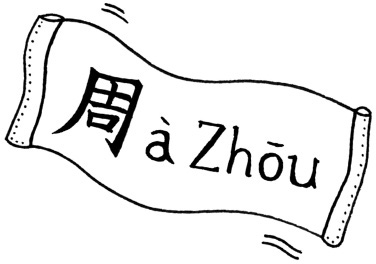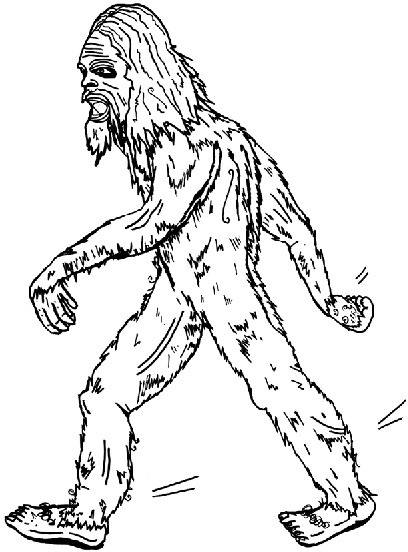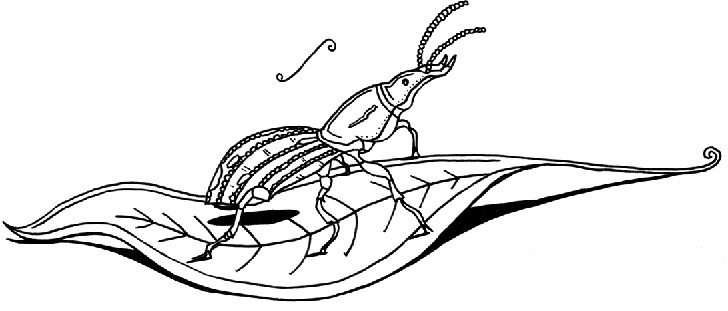

ZHOU, YOUGUANG▶
The world lost a former scarecrow who improved China’s literacy rate by more than 600 per cent.

Zhou Youguang (1906–2017), who died aged 111, was the ‘father of Pinyin’, a method for writing Chinese in the Roman alphabet. Thanks to his system, China’s capital, 北京, could be written as ‘Beijing’. In fact, it was down to Zhou’s system, introduced in 1958, that we now call it Beijing. Prior to the standardisation of Pinyin, the city was known to the West as Peking.*
It is thanks to Pinyin that China’s illiteracy rate, which stood at 85 per cent in 1958, is now just 5 per cent. Despite this, Zhou wasn’t seen a national hero. In fact, during Mao’s Cultural Revolution Zhou was sent away to be ‘re-educated’ and was exiled to a farm where he was given a job as a scarecrow, literally chasing birds from farmers’ fields.
Following his ‘rehabilitation’ in 1985, he became part of a team that translated the Encyclopaedia Britannica into Chinese. He then worked on the second edition, and continued translating articles until the day he died, completing one article a month.
It was this translation work that caused Zhou to become very critical of the Chinese government: he noticed the lies it was feeding the public by learning the truth in the encyclopedia. His controversial views led to many of his books being banned (he wrote over 30). However, he was never deterred from stating his opinions. ‘What are they going to do,’ he asked the BBC, aged 106, ‘come and take me away?’ His works include The Shock Wave of Modern Culture, Chinese Characters and the Question of Culture and One Hundred Years Old, But Publishing a New Book.
Zhou died on 14 January in Beijing, in a hospital called Peking Union.
ZIKA▶
Google fought zika by releasing millions of sterile mosquitoes.
Google’s science arm, Verily, has created a robot that can incubate mosquitoes and infect them with the naturally occurring Wolbachia bacteria, which sterilises male insects. The robot can also sort males from females, and roughly 1 million sterile male mosquitoes can be raised a week.
In a 20-week trial, sterilised males were released from vans that drove around the streets of Fresno, California. The hope is that they will inundate local females with their useless sperm, thus leading to a massive drop in the mosquito population and a simultaneous decline in mosquito-borne diseases like the zika virus. If the trial is a success, the plan is to raise and then release 20 million sterile males. Residents needn’t worry about being bitten by the extra mosquitoes, as they have also been bred not to bite.
ZIMBABWE▶
Robert Mugabe’s wife named Robert Mugabe’s corpse as the successor to Robert Mugabe.
Robert Mugabe said he is keen to stand in the 2018 Zimbabwean presidential elections, by which time he’ll be 94. He suggested that if he dies before the polls, his wife, Grace, should stand in his place, but Grace said that she would rather his corpse became president. She changed her mind a few months later, however, saying that perhaps he should name a successor instead.
Mugabe celebrated his 93rd birthday with a 93-kilo cake shaped like Zimbabwe, and a party that cost $800,000, even though 5 million of his citizens are currently dependent on food aid. The party also featured banners thanking the president for ‘optimising the use of your resources for our people’.
Whether it’s Robert, Grace or someone else, the Mugabe family are going to figure in public life for a while. This year, for example, one of the new appointees to the country’s censorship board was Mugabe’s daughter Bona. The board is responsible for monitoring films, books, and pole dancers, making sure their dances are not indecent. One of Bona’s colleagues in her new role is former minister Aeneas Chigwedere, a man whose own son sued him two years ago on charges of witchcraft and ‘possessing goblins’.
ZOMBIES▶
Illinois named October 2017 its ‘Zombie Preparedness Month’.
The idea behind this, according to the state legislature, was that ‘If the citizens of Illinois are prepared for zombies, than [sic] they are prepared for any natural disaster.’
Spain, however, will be in trouble if zombies attack. This year, the country’s opposition asked what plans the government had in place in the event of a zombie apocalypse. The hope was that the government’s inability to respond to this would highlight their general lack of answers to anything. Instead, the government came up with the considered answer that Spain has: ‘no specific protocols for such an event because by that moment little can be done’.
The man who we can thank for our current epidemic of zombie films died this year. George A. Romero’s 1968 masterpiece Night of the Living Dead was the first low-rent, high-thrill zombie film. It’s worth noting, though, that while the protagonists in his movie had all the attributes of modern zombies – hostile, hungry and unconsciously walking to the next victim – he actually called them ‘ghouls’. In an article published by Vanity Fair just before he died, Romero explained how he disliked modern zombie flicks such as Brad Pitt’s World War Z. ‘I can’t pitch a modest little zombie film, which is meant to be sociopolitical,’ he said. ‘I used to be able to pitch them on the basis of the zombie action, and I could hide the message inside that. Now, the moment you mention the word “zombie”, it’s got to be, “Hey, Brad Pitt paid $400 million to do that.”’
ZOOLOGY, CRYPTO-▶
A New Zealand scientist announced a hunt for the Loch Ness Monster’s dandruff.
Neil Gemmell, Professor of Genetics at University of Otago in New Zealand, travelled to Scotland this year to talk to cryptozoologists ahead of his scheduled hunt for the Loch Ness Monster in 2018. He plans to bottle up some of Loch Ness’s water to analyse it for environmental DNA (eDNA), which comes from the excrement, skin cells, urine or dandruff that organisms constantly shed, and leave behind in their habitat. If Gemmell finds any DNA that he can’t identify, it could be a clue to Nessie’s existence. Of course, he doesn’t expect this to happen – rather, he’s using the monster hunt as a way of publicising this method of analysis, and to discover more about non-crypto life under the surface of Loch Ness.
Professor Gemmell’s announcement came as welcome news to the Nessie community, which hadn’t had the best start to the year. Gary Campbell, the keeper of the Loch Ness Monster Sightings Register, said he believed Nessie had gone missing. She hadn’t been seen in over eight months. It was particularly concerning given that in 2016 there were more sightings than any other year in the 21st century, which Campbell said was thanks to smartphones and webcams (one sighting having been made by a man in America watching a live stream from his computer). Much to the community’s relief, 2017’s dry spell came to an end in late April when a self-confessed sceptic* from Manchester submitted a (predictably grainy) photo.
Other cryptozoology spots this year include one made by a prominent sasquatch hunter who runs a Facebook group called Bigfoot 911. John Bruner, from North Carolina, published what he believed was absolute proof of Bigfoot on camera. He claimed the photo, snapped while he was hunting in the Appalachian Mountains, captured a creature that stood over 8 feet tall. However, after he published the photo a wandering shaman came forward and identified himself as the beast in the picture. Gawain MacGregor had been walking in the forest on the night of the incident, dressed head to toe in animal skin, and conducting his own search for the mythical (or not) creature. The members of Bigfoot 911 still deny that they photographed the shaman, and insist the creature they saw ‘moved with speed unmatched by any human’.

Meanwhile, on another Facebook page, North Carolina police posted: ‘If you see Bigfoot, please do not shoot at him/her, as you’ll most likely be wounding a fun-loving and well-intentioned person, sweating in a gorilla costume’ (see also Marathon, London).
ZOOLOGY, NON-CRYPTO-▶
For CPR on an aardvark, see Aardvarks; for controlling populations with sausages, see Airdrops; for a surfeit of hogs, see Boar; for how borders affect animals, see Border Wall; for condoms that look like otters, see Condoms; for cattle acting like lemmings, see Cows; for a drastic alternative to mating, see Dragonflies; for the plans of the Carpinator, see Fish; for fluorescent amphibians, see Frogs; for sperm orbiting the Earth, see Mice, Space; for a spread that stops squirrels spreading, see Nutella; for weird creatures of the deep, see Oceans; for recreational drug use in parrots, see Opium; for birds mistaken for rocks, see Penguins; for a reptile mistaken for a stone, see RSPCA; for animal attacks, see Shark Attack; for avian asps, see Snakes; for gold members, see Spiders; for rhino conservation, see Tinder; for a bird with two dads, see Vultures; for a species that had a bad year, see Wasps; and for sterilising mosquitoes, see Zika.
ZOOS▶
A zoo in Russia sued a company for giving a raccoon an unnatural interest in human breasts.
The Moscow petting zoo lent Tomas the raccoon to a production company, thinking he would be used in a regular advertisement. When he was returned, they found that he was traumatised, withdrawn – and attracted to women’s breasts. It turned out he’d been used in what the zoo called an ‘erotic photoshoot’ in which he snuggled up with a naked woman. Zookeepers suspect he was lured to her breasts with treats, with the result that he now associates them with food. The advertising company said the lawsuit was absurd, and complained about Tomas’s behaviour, saying he was constantly running away during the shoot and had chewed up the actress’s underwear.
Another objectionable use of zoo animals emerged in Thailand, where a safari park just outside Bangkok put on orangutan boxing shows for tourists. The apes were dressed in boxing shorts and gloves, placed in a ring and trained to kick and hit each other. Other apes wearing bikinis stood at the ringside, holding up round cards. Animal rights groups (unsurprisingly) called for the practice to be banned.
Animals don’t always need human encouragement to start fighting each other. In fact, a baboon war that had been raging at Toronto Zoo for more than two years required human intervention to end it. The war began in 2015 after the matriarch died, triggering a succession crisis where baboon factions fought to install their candidates as the dominant ‘queen’. The violence led to dozens of injuries and multiple surgeries, with one monkey having to have part of her tail amputated. Zookeepers eventually gave the baboons hormonal contraceptives to regulate their tempers and reduce rivalries. A new queen, Kalamata, has finally emerged and a truce seems to have been reached, at least for now.
ZUCKERBERG, MARK▶
Facebook, which has been accused of peddling ‘fake news’, accidentally reported its founder was dead.
A glitch in the system meant that a memorial was posted on Mark Zuckerberg’s Facebook page, along with those of 2 million other users. Zuckerberg was very much alive though, and on a huge tour of all 50 states of America. He said he was undertaking this so that he could meet ‘ordinary Americans’, many of whom are Facebook users, in order to improve his website. Most people, however, assumed that the tour was a precursor to him announcing a presidential bid in 2020. His claims to the contrary didn’t convince many people, as it was pointed out that he was travelling with former official White House photographer Charles Ommanney, who was official snapper for both George W. Bush and Barack Obama.
If Zuckerberg does become president, he will be the youngest person to get the job. He’s got a long way to go to convince the American public though. In a July poll asking who would win in an election between him and Trump, Zuckerberg only managed to poll 40 per cent, meaning that at that moment he wouldn’t even beat the most unpopular president in US history.
ZYZZYVA▶
The Oxford English Dictionary added a new last word.
As of this year, the very final entry in the OED is ‘Zyzzyva’ (pronounced ‘zih-zih-vah’). It’s the name of a genus of tropical weevils found in South America. Before ‘Zyzzyva’ took over, the last word in the dictionary was ‘zythum’, which was a kind of beer brewed in ancient Egypt. Other new entries in the summer 2017 intake included ‘barebacking’, ‘devil’s shoestring’, ‘ginge’, ‘hygge’, ‘unclenched’ and ‘zoomable’.
The OED doesn’t know why ‘Zyzzyva’ has 3 ‘z’s, 2 ‘y’s, one ‘v’ and only one ‘a’. The word was coined by an Irish entomologist in 1922. It could be that it was intended to mimic the noise the weevils make; then again, it could have been chosen deliberately to be annoying and secure a position right at the very end of an alphabetically ordered book.
For another word that appears at the extreme end of dictionaries, see Aardvarks.

LATE NEWS
There are a lot of people we’d like to thank.
Our colleagues at QI – Alex Bell who chewed over many ideas with us and brought crucial design inspiration to the table, as always; Anne Miller who provided heaps of ideas and news stories, without which this book would have been poorer; and Alice Campbell-Davies, who painstakingly read through the manuscript, making sure that we didn’t say see Insects when, of course, we meant see Stick Insects. And to the wider QI family: Coco Lloyd, James Rawson, Liz Townsend, Freddy Soames and Natascha McQueen, who all chipped in at vital moments too.
Our editor, mentor and wrangler, Nigel Wilcockson, who knew there was a book in us two years before we did, and who coached us into producing one we could be proud of. He’s done ten jobs at once, and done them all better than we could have hoped. Scientists are currently studying how he managed to deal with all four of us and still, somehow, maintain a sunny disposition throughout.
Our thanks also go to everyone at Cornerstone and the rest of the fantastic team at Penguin Random House: Rowan Borchers, Fergus Edmondson, Laura Brooke and Francesca Russell. Natascha Nel delivered a stonking cover and Lindsay Nash was a brilliant designer, and both were remarkably tolerant of our constant back-and-forthing over the tiniest of details. Thanks, too, to our superb illustrator, the doughty Adam Doughty, who never batted an eyelid when we sent over requests for him to draw (for example) an aardvark receiving mouth-to-snout.
To all the Harkin, Murray, Ptaszynski and Schreiber family members – thank you for buying at least 30 copies of this book each to give to your friends this Christmas. And thank you for not giving them the receipt, so they can’t exchange it for something else.
Thanks, most importantly, to John and Sarah Lloyd, QI’s founder-managers and fountainheads of advice, encouragement and understanding. When we first told them about the idea for the podcast – something that would probably make no money and chew up a lot of our work time – they said ‘go for it’, because what they value more than anything is a good idea. Without them both, there really would be no such thing as The Book of the Year.
Who could have known that when we first gathered around a microphone those three-and-a-bit years ago that it would eventually lead to a book? We have only managed to get this far because each week a group of people from all over the world press play on the latest episode we’ve posted online. To those listeners, we want to say thank you so much, and we promise that if you keep listening, we’ll keep dorking out. May the Mongolian Death Worm bless you all.
That’s it, that’s all of our thanks. A lot of early errors were caught by our publishers, early readers and well-wishers: any that remain belong to us four alone (mainly Dan). If you spot any inaccuracies, we warmly encourage you to write in to us on podcast@qi.com or @nosuchthing on Twitter, and we’ll make sure to apologise in the introduction to the Book of the Year 2018.